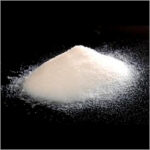Silica Grits Pure ( Grit – 60/120 )
Silica Grits, specifically those with a grit size of 60/120, can be used in various industries for a range of applications. Silica is a naturally occurring mineral that is composed of silicon dioxide and is known for its hardness, durability, and chemical resistance.
Here are some common uses and applications of silica grits (Grit – 60/120) in construction, composite, paint, and other industries:
Abrasive Blasting: Silica grits are often used as abrasive media in sandblasting operations. They can be us
ed to clean, prepare, and etch surfaces in construction and industrial settings. This is particularly useful for surface preparation before painting or coating.
Non-Skid Surfaces: Silica grits are sometimes added to paints, coatings, and resins to create non-skid surfaces. This is especially important in applications where slip resistance is essential, such as industrial floors, decks, and ramps.
Construction: Silica grits can be incorporated into construction materials like concrete to improve wear resistance and provide a textured finish. They are also used in the manufacturing of construction adhesives and sealants.
Composite Materials: In the composite industry, silica grits can be used as a filler or reinforcement material. When added to composite materials like plastics or fiberglass, they enhance strength, stiffness, and resistance to heat and chemicals.
Paint and Coatings: Silica grits are used in paint formulations as extenders and matting agents. They can improve the durability and scrub resistance of paint, as well as reduce gloss in matte and satin finishes.

Water Filtration: Silica grits are used in water treatment and filtration systems. They help remove impurities and contaminants from water by trapping particles and facilitating their removal.
Resin Casting: In the production of resin-based products like countertops and decorative items, silica grits are used to add texture, strength, and heat resistance to the final product.
Metal Casting: Silica grits are employed in metal casting processes, particularly in the investment casting method, to create molds and cores. They help maintain the shape of the casting and improve surface finish.
Oil and Gas Industry: Silica grits are used in the oil and gas industry for well stimulation and hydraulic fracturing (fracking). They help prop open fractures in the rock, allowing the extraction of oil and gas.
Agriculture: Silica grits are sometimes used as an abrasive in agricultural applications for cleaning and sharpening equipment or as a soil amendment to improve aeration and water retention.
Manufacturing: Silica grits are used in various manufacturing processes, such as the production of glass, ceramics, and silicon wafers for electronics.
It’s important to note that the use of silica in some applications, especially where it may become airborne as fine dust, can pose health risks due to the potential for respiratory exposure. Occupational safety measures, including the use of personal protective equipment and engineering controls, should be in place when handling silica materials to minimize the risk of silicosis and other health issues. Regulations and guidelines should be followed to ensure safe handling and disposal.






